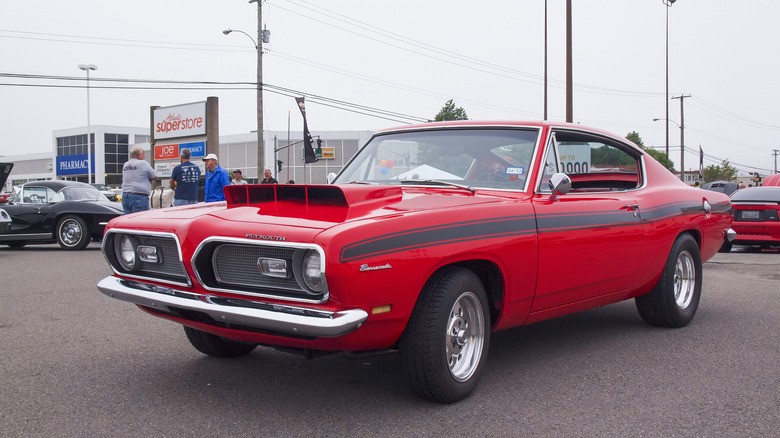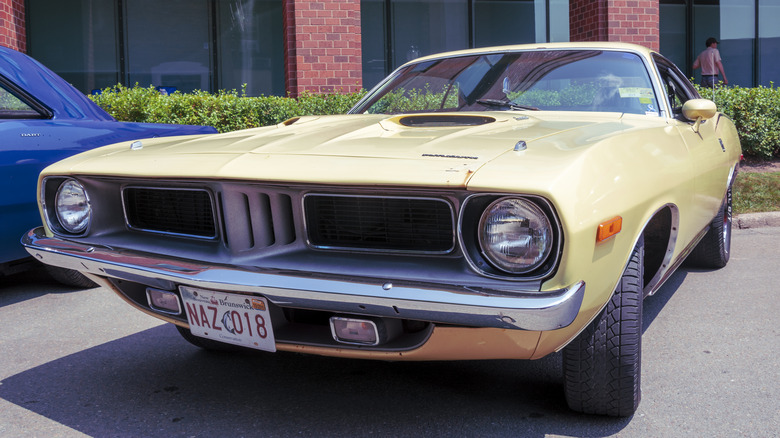What Ever Happened To The Plymouth Barracuda?
Chrysler's Plymouth division put a surprisingly long list of muscle cars on the road during the era's peak in the 1960s and early '70s, including a few models that deserve more attention than they get. The Barracuda began life in 1964 as an option package on the Valiant and added a 273-cu-in V8 as an option over the base engine, the 225-cu-in variant of Chrysler's legendary slant six. According to Classic Industries, nine out of 10 Valiant Barracuda buyers opted for the V8 in 1964.
The Barracuda was allowed to swim on its own as a standalone model the next year, when a 'Formula S" package was offered that included a high-compression version of the 273 V8. Minor styling changes came in 1966, but the next year Plymouth spawned a new generation version. The 273 V8 was the base engine, with a big-block 373-cu-in V8 as the optional powerplant.
For 1968, the 273 was replaced by a 318-cu-in small-block, and the 426 Hemi known as "The Elephant" was placed in the Barracuda — biological impossibilities be damned. In 1970, the Barracuda was moved to the larger E-body platform, and the AAR Barracuda, a Trans-Am racing spec version, was offered. The badge lost its first two syllables in 1972 and became simply the "Cuda," but the renamed model only lasted for two more years before Chrysler yanked it from the water.
What ultimately killed the Barracuda?
Peak production years for the Barracuda were between 1965 and 1968, when Plymouth cranked out more than 200,000 of the A-body models. The E-body version moved better on the road than it did on the assembly line, with production peaking in the first year at about 35,000 units. The model only lasted four more years, with production dipping below 5,000 for its swan song in 1974. By then, the oil crisis, emerging emissions regulations, and higher insurance premiums for muscle cars had dampened the American car-buying publics enthusiasm for oversized, overpowered cars like the 'Cuda. Manufacturers started to turn their efforts to smaller, more fuel-efficient models, and Chrysler dumped the Cuda's E-body cousin, the Dodge Challenger, as well.
Dropping the 'Cuda in 1974 also helped Plymouth avoid the need to redesign its bumpers to meet the federal government's new 5 mpr crash standard, but that alone was certainly not enough to kiil the 'Cuda. To this day, even with the Plymouth brand having been folded in 2000, the Barracuda/Cuda is a hot commodity on the secondhand market, fetching an average price of more than $100,000. Hemi-powered examples are especially prized; a yellow 1970 Hemi 'Cuda convertible sold at auction in January for nearly $2 million.

